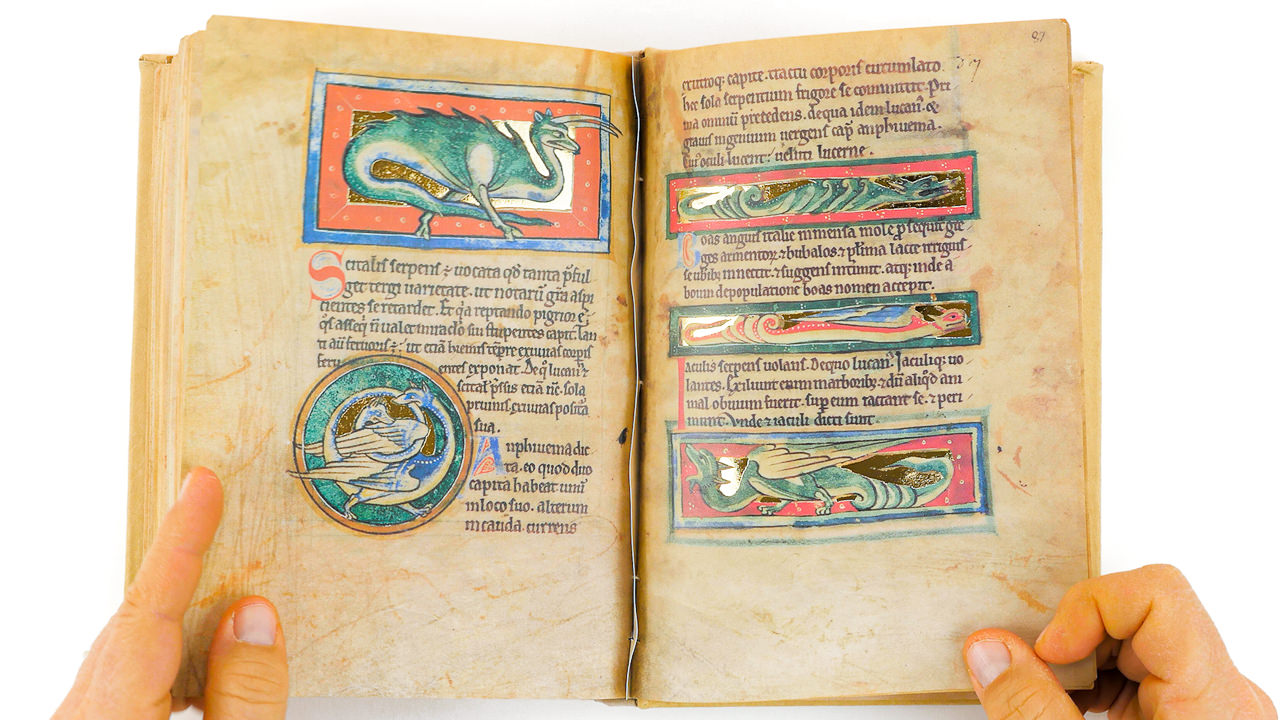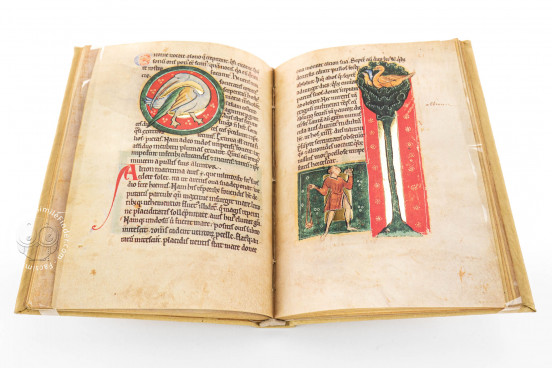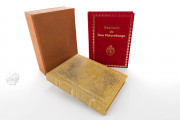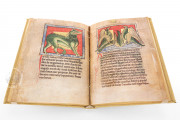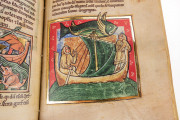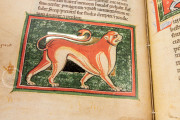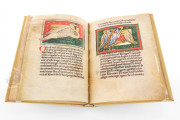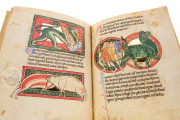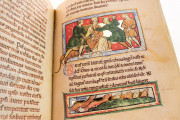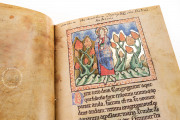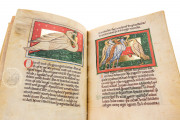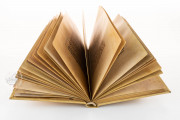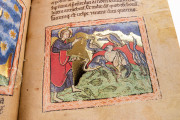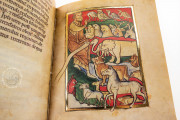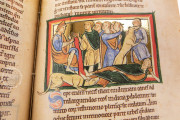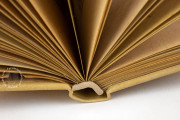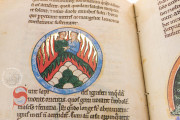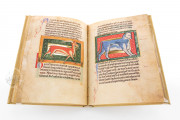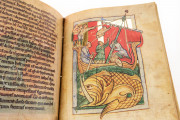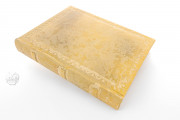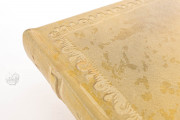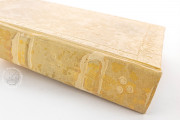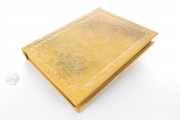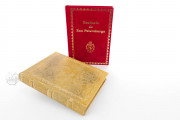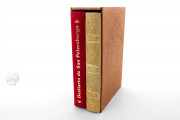The Saint Petersburg Bestiary, also known as the Saltykov-Shchedrin Bestiary, is a lavishly illuminated manuscript describing the physical characteristics and Christian moralizations of animals, both real and mythical. It was made in eastern England and is closely related to the Worksop Bestiary (New York, Morgan Library & Museum, MS M.81) in both textual content and the composition of its images. Dating from the 1170s or 1180s, it is an early example of a type of book that became extremely popular in thirteenth-century England. Its ninety-one folios feature 114 miniatures, four of them full-page, illustrating a Creation cycle and 108 animals.
The bestiary's text is a Latin version of the Physiologus (The Naturalist), a Greek text of the second century CE. This core text is preceded by an account of Creation based on Genesis and Adam's naming of the animals. The text also includes many animal descriptions derived from the Etymologiae of the Spanish bishop, Isidore of Seville (d. 636).
Animal Lore in Images of Varied Size and Shape
A full-page miniature (fol. 5r) shows Adam facing a variety of birds and beasts, including an owl, an ape, a camel, and an elephant. The miniature for the eagle, which occupies a third of a page, illustrates the beliefs that the bird's eyesight is so keen that it can see fish underwater and that it can look directly at the sun: one eagle dives into water, and two more—one clutching a fish—stare at the blazing sun (fol. 71r). Some of the miniatures are circular or lobe-shaped compositions. For example, the bonnacon, a mythical bison-like creature, is shown releasing its fire-like dung on a group of people in a miniature in the shape of two interlocking circles (fol. 38r).
Painting in Closely Related Sumptuous Styles
The plan for the manuscript evolved during its manufacture. The opening section on Creation (fols. 1–4) was not a part of the original plan. The miniatures in the Creation cycle differ from most of the manuscript's painting in color palette—with more use of blue—and framing elements. Nevertheless, the script is consistent with that of the bulk of the manuscript and the painting styles harmonize throughout. Bold, black outlines and a palette dominated by red and green, and the abundant use of gold leaf is characteristic of all the painting. The sumptuousness of the decoration suggests that the book may have been made for a wealthy lay patron.
Creatures Great and Small, Domestic and Mythical
The bestiary proper is comprised of short chapters, each devoted to a particular species, introduced by a miniature and by a pen-flourished initial. The animals described and depicted vary from large farm animals to worms and include a variety of exotic, fantastic, and hybrid beasts. The text is written in the Transitional Script of the long twelfth century. Although made in England, the manuscript reached France by the sixteenth century, when annotations, most labeling the depicted animals, were added in French. One annotation is in Greek.
A Gem of the National Library of Russia
An inscription, probably of the early eighteenth century, records the manuscript's owner as François de la Morlière. The manuscript may well have then found its way into the library of the Benedictine Abbey of Saint-Germain-des-Prés in Paris. While serving as a diplomat in Paris in the late eighteenth century, Peter P. Dubrovsky (1754–1816) acquired the book. He sold his collection of manuscripts and papers in 1805 to Tsar Alexander I to form a major component of the manuscripts division of the Imperial Public Library (in 1918 renamed the Russian Public Library, known from 1932 to 1937 as the Saltykov-Shchedrin State Public Library, and now the National Library of Russia).
We have 1 facsimile edition of the manuscript "Saint Petersburg Bestiary": Bestiario de San Petersburgo facsimile edition, published by AyN Ediciones, 2002
Request Info / Price
